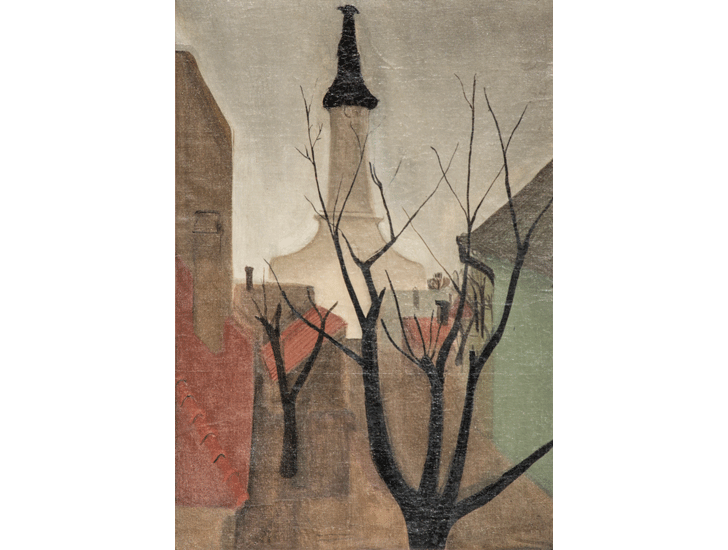By Shriram Khadilkar
Photography: courtesy Lalbhai Museum, Ahmedabad
Read Time: 3 mins
 |
| 'In the foreground' Isoult with the daughters of the wood Watercolour on Paper, 1924, 11 in x 9.75 in |
This exhibition of the early works of India’s renowned painter Amrita Sher-Gil unveils some hitherto unvisited gems from the artist’s repertoire…
It is customary for the young to inquire. But when curiosity translates into the depiction of an ever-maturing thought process, one needs to sit up and take note. And this was the case in point with artist Amrita Sher-Gil.
Known as one of contemporary India’s most talented woman painters, she remains a prodigious inspiration, who was well ahead of her times in terms of choice of subject, treatment, portrayal of narrative… and all of this and more at the uninitiated age of five years.
 |
| Savitri & Satyavan Watercolour on Paper, 1925, 6in x 9.5 in |
.jpg) |
| Reverse side of painting Savitri & Satyavan |
Offering a deeper insight into what made Amrita a force to reckon with, is this exhibition of the artist’s works on display at the Lalbhai Museum in Ahmedabad. Attempting to peer a little deeper into her psyche, on display is a collection of her neonate works –from age 8 to 13 years - mostly unknown – that shaped Amrita into becoming a painter.
Of the 50-odd drawings and paintings on display, the bulk of which are in charcoal, pencil and graphite sticks, are some accompanied by the artist’s note that allows as significant insight into her mindset. Naturally endowed, the artist showed a level of maturity much beyond her years. Her distinct style depicts a lot of open space in the centre of the painting; keeping the drawing small in size, but concentrating on the eyes and the expression to be conveyed. Colours are sparsely used – limited to a few shades; very unlike the usually-observed exuberant riot of colours that can be associated with a child, all of 8-10 years. Her use of black, neutrals like hues of browns speak of a very evolved state of mind; the premise reinstated using layering and seamless merging that is the hallmark of veteran artists. A lot of her work is also left unfinished, as if waiting for a calling of sorts, for something more…
In one painting, she has drawn a girl setting under the tree, with a lion seated at a small distance away from her. In another, she has painted three girls bathing in a pond in a jungle, with a comment about the work on its reverse. Done in watercolours, she has created the feel of water through colour transparency using a layered application of browns, blues and greens. Her realistic nudes are another amazement altogether. To have such a sharp sense of anatomy at the age of 13 is nothing short of an extraordinary talent. Other imagery includes women with short hair, stylish costumes… again speaking of her observation and interpretation skills at a very tender age.
 |
The exhibition also includes one of the eight-nine paintings that she is known to have done, when stationed in Hungary - the Hungarian Steeple Church painted in 1938. This work is in realistic manner and alludes to her cultural conflict – that she was painting like a European but thinking like an Indian.
“Europe belongs to Picasso, Matisse and many others, India belongs only to me.” This statement by Amrita Sher-Gil was the true embodiment of an exceptional talent that was short-lived (1913-1941), but left an indelible mark in Indian art history. Organised as part of The World Heritage Week celebrations, the exhibition at the Kasturbhai Lalbhai Museum will be on view until Jan 30, 2018. (Timings: 10am to 1pm; 3pm to 5pm). The absolutely worth-a-visit show coincides with Amrita’s 76th death anniversary – the 6th of Dec.



No comments :
Post a Comment